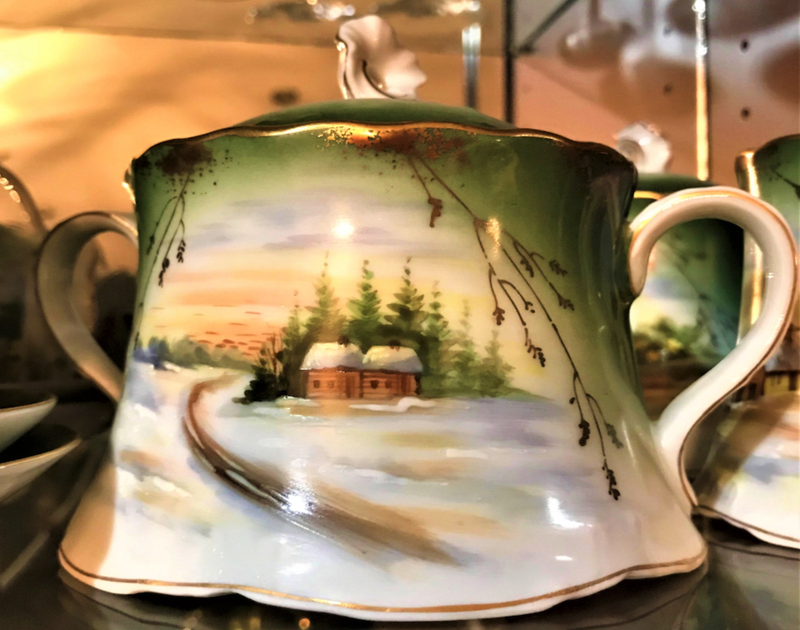DEAR HELAINE AND JOE: I came across your articles and am wondering if you can help me out. I have some questions about the stamp on my tea set. It is from Russia and the decoration is Russian winter. I am attaching pictures of the mark.
-- O.T.
DEAR O.T.: We have been answering questions like this for almost 30 years now (yikes!), and this is the first time we have ever received an inquiry about an object from this rather famous porcelain factory.
We asked O.T. to send us pictures of the actual tea set and have used one of those rather than an illustration of the mark. The mark is in red and features a double-headed eagle surmounting a circle with the image of St. George slaying the dragon within. Around the outside in Cyrillic is the identification of the factory, which was established by Englishman Francis Gardner in 1766.
That year, the Russian College of Manufacturing gave Gardner permission to start a porcelain factory in the village of Verbilki, located in the Dmitrov district of Moscow Province. Gardner had spent time scouting out the location of the necessary raw material in Russia, but he realized that to be commercially viable he needed to scout out the European competition as well.
It is said that he sent his son to Western Europe to acquire models of Meissen and Sevres porcelain, but he also needed skilled workmen. It is reported that some "Russian noblemen" sent some of their serfs to work in the European factories to learn the necessary skills. It is also said that the serfs were unpaid.
Early on, Gardner began successfully competing with the Imperial Porcelain Factory that began under the auspices of Peter the Great but did not really prosper until the mid-18th century. Gardner tended to fashion his product according to the purchaser's purse. Imperial commissions were lavish, while items sold to lesser human beings could be far less so. Lower end decorations might consist of initials, a wreath and a sprig or two tied with a ribbon or perhaps a bouquet of flowers.
The Gardiner family remained in control of the factory until 1892, when it was sold to Matvey Kuznetsov. After the Communist Revolution it was renamed after the town of Dmitrov, and when communism fell in Russia, the factory resumed its original name of Gardner.
The mark found on the tea ware belonging to O.T. was in use during the late 19th century. Some sources suggest Kuznetsov may have continued using it. The design of the porcelain does appear to be late 19th or even early 20th century to us, emphasized by the presence of flower finials rendered in a turn-of-the-century manner.
The hand-painted winter scene is bleak, but the sprigs that frame the scene suggest perhaps the promise that spring will follow. We do not know the extent of the tea set, but if it consists of a tea pot, sugar bowl, cream pitcher and eight cups and saucers, the retail value might approach the $4,000 to $5,000 range.
Helaine Fendelman and Joe Rosson have written books on antiques. Do you have an item you'd like to know more about? Contact them at Joe Rosson, 2504 Seymour Ave., Knoxville, Tenn. 37917, or email them at treasures@knology.net. If you'd like your question to be considered for their column, please include a high-resolution photo of the subject, which must be in focus, with your inquiry.
HomeStyle on 12/29/2018
